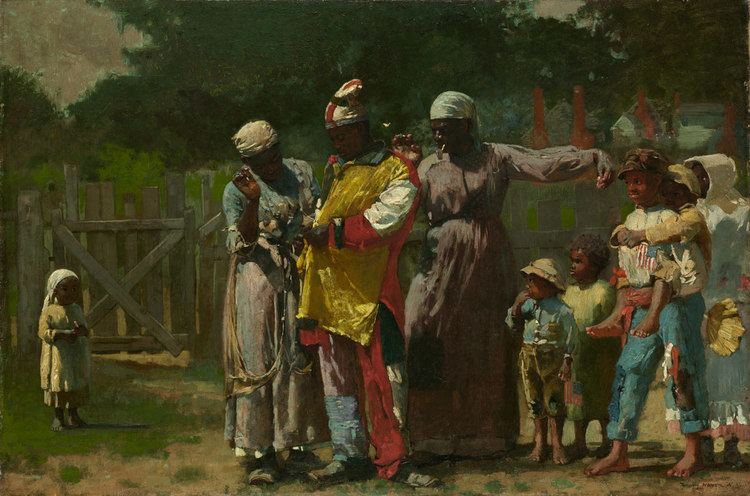Year 1877 (1877) Genre Genre art Media Oil paint | Medium Oil on canvas Dimensions 51 cm x 76 cm Created 1877–1877 Period Realism | |
 | ||
Location The Metropolitan Museum of Art Similar Winslow Homer artwork, Artwork at Metropolitan Museum of Art, Oil paintings | ||
Dressing for the Carnival is an 1877 painting by the American painter, printmaker and illustrator Winslow Homer.
Homer painted African Americans, completely avoiding the stereotypes with which their collective image had been flooded during the period of Reconstruction after the Civil War. The 1870s and 1880s produced innumerable images of African Americans at carnival time, mindless, jolly, condescending. But Homer's Dressing for the Carnival is unlike all of them: a deeply nuanced and, in the end, tragic scene of preparation for festivity. A group of people is preparing for the African-American festival known in the South as Jonkonnu and in the North as Pinkster. It entailed the costuming of a Harlequin-like figure or Lord of Misrule, and this Homer depicts: a man caparisoned in bright, tatterdemalion clothes, yellow, red, and blue, with a liberty cap on his head. Two women are sewing them on him. The one on the right extends her arm, pulling the long thread right through, in a gesture of compelling and somber gravity; she is a classical Fate, seen below the Mason-Dixon line. Next to her, but apart from her, gazing at the vesting ceremony with wonder, are some children, one of whom holds a Stars and Stripes (for by Reconstruction, the rituals of the Fourth of July had been overlaid on those of Jonkonnu). Homer makes us sense how far the hopes of emancipation still are from the realities of black life in the South.
